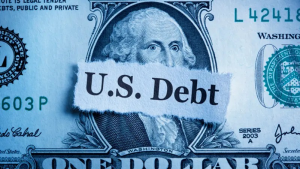The Bank of England could end up beating the Federal Reserve and the European Central Bank in the race to cut interest rates if market expectations prove correct, but the pound has more than just its yield appeal to ward off any serious bear attacks.
At its March meeting, the BoE left interest rates unchanged at 5.25% and maintained its outlook for inflation and growth. But two policymakers who had previously voted for a rate hike switched to a hold - lending the central bank's decision a more cut-friendly bent than it otherwise would have had.
One major support for the pound over the last six months has been the expectation that the BoE will be slower to cut rates than either the Fed or the ECB, meaning UK lending rates have been higher than those elsewhere.
A week on from the BoE's last meeting and the futures market has flipped. Traders are now placing a small, but nonetheless noticeable, bet the BoE could be the first of the three to cut.
There is a 20% chance the central bank could deliver a quarter-point cut at its next meeting on May 9, while the chance of a cut from the ECB at its upcoming meeting on April 11 lies at around 5%, and at roughly 13% for the Fed to move on May 1.
But investors haven't exactly deserted the pound. The most recent weekly data from the U.S. regulator shows speculators trimmed their bullish sterling position to $4.23 billion from $5.623 billion - the largest since records began in 2012.
The British economy has muddled its way through over two years of almost non-stop rate rises and soaring energy prices with little more than a short, mild recession.
A number of macro metrics have recently improved. Even inflation has declined enough to bring the UK more in line with the rest of the G10 - a year ago, Britain was a clear outlier, with price pressures well above the average for this group.
"Sterling's external vulnerabilities screen much lower now, helped in no small part by the fall in energy prices," Deutsche Bank (ETR:DBKGn) said in a recent note that pointed to the narrowing in the current account deficit as another sterling-positive example.
Sterling might also have time on its side, given that it is fast approaching what has traditionally been its best month of the year for performance.
April is a sweet spot for the pound, according to strategists at Bank of America (NYSE:BAC), who say if history is any guide, the pound could hit $1.30 next month, up from around $1.266 right now.
On average over the last 50 years, the pound has gained 0.7% against the dollar in April, making this by far its strongest month for performance, compared with August, its weakest month, when it has lost an average of 0.7%.
"Seasonality does play a part and partly that's to do with the tax year-end and people filling up their ISAs (individual savings accounts), so there's more investment, UK-wise," XTB research director Kathleen Brooks said.
"Whilst the yield differential could be eroded, and that's definitely what's driven sterling in the last year, it could be in a way that is growth-positive, which could support the pound," she said.













